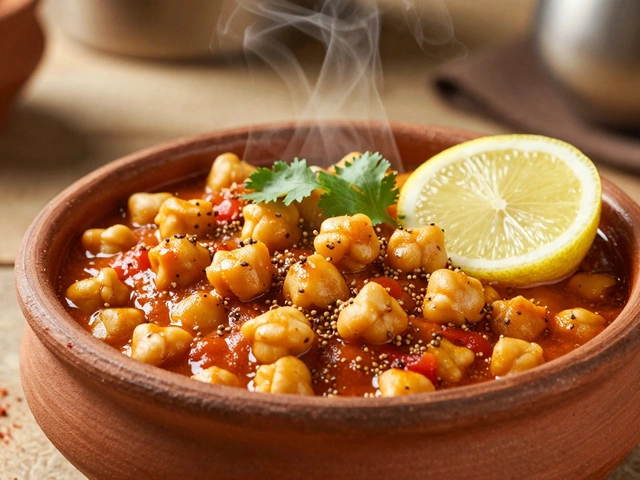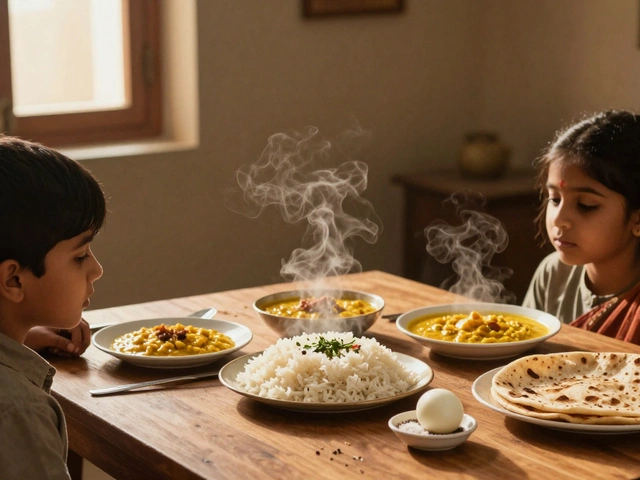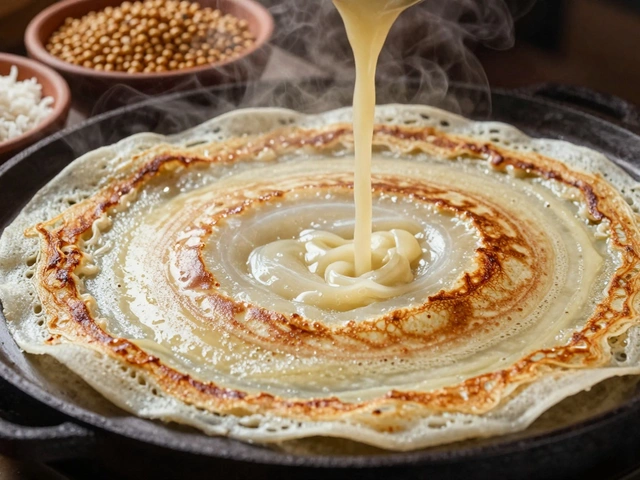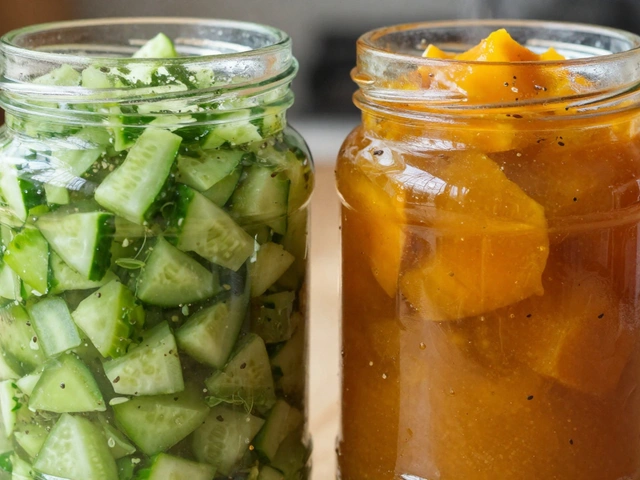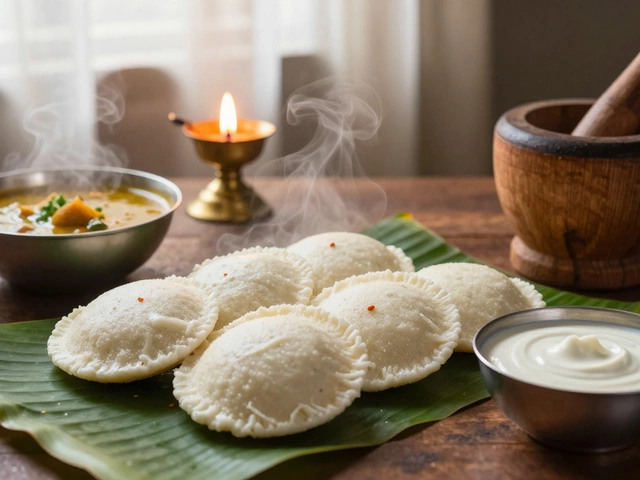Gulab Jamun Recipe Calculator
Calculate ingredient quantities for your specific serving size. Enter the number of people you'd like to serve, and our tool will adjust all measurements proportionally.
When people think of a Gulab Jamun is a deep‑fried milk‑solid dumpling soaked in fragrant sugar syrup, often enjoyed at festivals and celebrations across India, they’re actually tasting a tradition that stretches back centuries. This article peels back the layers of that beloved traditional Indian sweet, explains why it’s considered the quintessential mithai, and shows how it sits alongside other classic desserts like jalebi, rasgulla, and ladoo.
Why Gulab Jamun Became India’s Signature Sweet
Historically, the sweet emerged in the Mughal courts of the 16th century, where cooks experimented with khoya (reduced milk solids) and rose‑scented syrups. Over time, the recipe traveled from royal kitchens to street stalls, wedding feasts, and finally to every Indian household. Its popularity isn’t just about taste; it’s a symbol of hospitality, celebration, and the sweet side of Indian culture.
Core Ingredients and Their Roles
- Khoya (mawa) - the dried milk base that gives the dumpling its dense, melt‑in‑the‑mouth texture.
- All‑purpose flour - a small amount to bind the mixture.
- Baking soda - creates a light interior when the balls are fried.
- Ghee or vegetable oil - for deep‑frying at a steady 350 °F (175 °C).
- Sugar syrup - typically infused with cardamom, a pinch of saffron, and rose water for aroma.
Each component plays a specific part: khoya supplies richness, while the sugar syrup balances the fried exterior with sweetness and fragrance.
Step‑by‑Step Gulab Jamun Recipe (Classic Version)
- Grate 200 g of khoya into a mixing bowl; crumble it finely so no clumps remain.
- Add 2 tbsp of all‑purpose flour and ¼ tsp baking soda. Mix until a smooth dough forms.
- Divide the dough into 1‑inch balls, ensuring no cracks on the surface.
- Heat 2 cups of ghee or oil in a deep pan; test temperature by dropping a tiny dough piece - it should rise slowly without browning.
- Fry the balls in batches, stirring gently, until golden brown (about 6‑8 minutes). Remove and drain on paper towels.
- Meanwhile, prepare the syrup: dissolve 1 cup sugar in 1 ½ cups water, bring to a boil, add 4 cardamom pods, a pinch of saffron, and 1 tbsp rose water. Simmer for 5 minutes.
- Transfer the hot fried balls into the warm syrup; let them soak for at least 30 minutes before serving.
The result is a soft, spongy interior that absorbs the fragrant syrup without falling apart.
Regional Twists on the Classic Gulab Jamun
While the core recipe stays the same, various Indian states add their own flair:
- Punjab - often uses powdered milk instead of khoya for a lighter texture.
- Gujarat - mixes a touch of grated coconut into the dough, giving an extra chew.
- South India - adds a splash of vanilla essence and serves the sweet with a drizzle of condensed milk.
- Maharashtra - the syrup includes a hint of kewra (screwpine) water for a distinct aroma.
These variations showcase how a single sweet can reflect local tastes while preserving its identity.
How Gulab Jamun Stands Next to Other Classic Indian Sweets
| Sugar | Primary Ingredient | Typical Region | Texture | Key Occasion |
|---|---|---|---|---|
| Gulab Jamun | Khoya (milk solids) | North India (pan‑Indian popularity) | Soft, spongy | Weddings, festivals |
| Jalebi | All‑purpose flour batter | All regions | Crispy, syrupy | Ramadan, fairs |
| Ladoo | Besan or gram flour | West India | Crumbly, nutty | Diwali, birthdays |
| Rasgulla | Chhena (paneer) balls | East India (Bengal, Odisha) | Spongy, juicy | Durga Puja, celebrations |
| Barfi | Condensed milk & nuts | All regions | Firm, buttery | Festivals, gifting |
The table highlights why Gulab Jamun is often called the “king of Indian sweets”: its universal appeal, moderate preparation effort, and ability to pair with both hot and cold desserts.
Beyond Gulab Jamun: Quick Recipes for Other Must‑Try Indian Mithai
Jalebi - Sweet Crispy Spirals
Mix 1 cup all‑purpose flour, ¼ cup yogurt, and a pinch of baking powder into a thick batter. Ferment for 2 hours, pipe into hot oil in spiral shapes, then immediately dunk in a sugar‑cinnamon syrup. The result: glossy, crunchy ribbons that melt in the mouth.
Ladoo - Hand‑Rolled Celebration Balls
Toast 1 cup roasted gram flour (besan) with 2 tbsp ghee, add powdered sugar, cardamom, and chopped almonds. While still warm, roll into bite‑size balls. Ladoos stay fresh for weeks, making them perfect for gifting.
Rasgulla - Syrupy Cheese Pearls
Form 200 g of fresh chhena into small smooth spheres, boil them in a light sugar syrup (1 cup sugar + 3 cups water) for 8 minutes. The cheese pearls absorb the syrup, becoming juicy and airy.
Barfi - Dense Milk Confection
Simmer 1 cup condensed milk with ½ cup powdered sugar, add 2 tbsp ghee, and a handful of chopped pistachios. Spread onto a greased tray, cool, and cut into diamond shapes.
These recipes are intentionally brief; each can be expanded into a full post for readers who want deeper technique tips.
Tips for Perfecting Your Gulab Jamun Every Time
- Keep the dough chilled for at least 15 minutes before shaping. Cold dough holds together better during frying.
- Fry at a steady medium heat; too hot and the outside browns before the interior cooks.
- Use a thick‑bottomed pan for even heat distribution.
- Allow the syrup to be warm (not boiling) when soaking the fried balls; this prevents them from breaking apart.
- If you like a richer flavor, add a splash of khoya milk or a few strands of saffron to the syrup.
Common Mistakes and How to Fix Them
Problem: Balls crack or split in the syrup.
Fix: Ensure the dough is smooth and free of cracks, and don’t over‑cook the fried balls.
Problem: Syrup is too thick; sweets become soggy.
Fix: Keep the syrup at a thin consistency (≈1 cup sugar per 1½ cups water) and warm it before adding the dumplings.
Problem: Gulab Jamun turns grainy.
Fix: Use high‑quality khoya; low‑fat milk solids can cause a gritty texture.
Frequently Asked Questions
What makes Gulab Jamun different from other Indian sweets?
Its base of reduced milk solids (khoya) gives a rich, melt‑in‑the‑mouth feel that’s distinct from grain‑based sweets like ladoo or cheese‑based rasgulla.
Can I make Gulab Jamun without khoya?
Yes. A common shortcut is to use milk powder mixed with melted butter and a bit of milk to mimic khoya’s texture. The flavor will be slightly less intense but still enjoyable.
How long can Gulab Jamun be stored?
When kept refrigerated in its syrup, they stay fresh for up to 5 days. For longer storage, freeze the fried balls (without syrup) for up to 2 months, then thaw and soak in fresh syrup.
Is Gulab Jamun suitable for vegans?
Traditional recipes use dairy, but a vegan version swaps khoya with soy‑based milk solids or almond milk‑based paneer, and uses plant‑based oil for frying. The texture changes, but the sweet‑syrup experience remains.
What are the best occasions to serve Gulab Jamun?
Weddings, Diwali, Eid, birthday celebrations, and even as a comforting after‑dinner treat. Its sweet, aromatic profile pairs well with tea or lassi.
Wrap‑Up: The Enduring Allure of India’s Sweet Heritage
From royal courts to humble kitchen counters, Gulab Jamun has survived wars, migrations, and changing palates because it hits the perfect sweet‑sour‑spice balance that Indian desserts are known for. Whether you’re a first‑time cook or a seasoned sweet‑maker, mastering this classic gives you a passport to the heart of Indian hospitality. So roll those soft balls, soak them in fragrant syrup, and share a bite of history with every spoonful.
